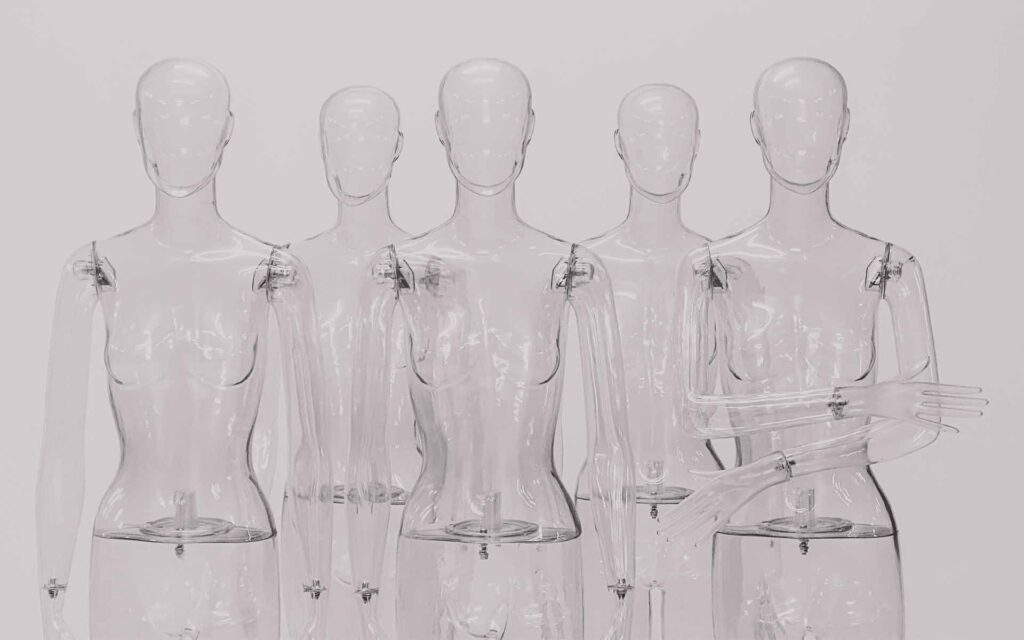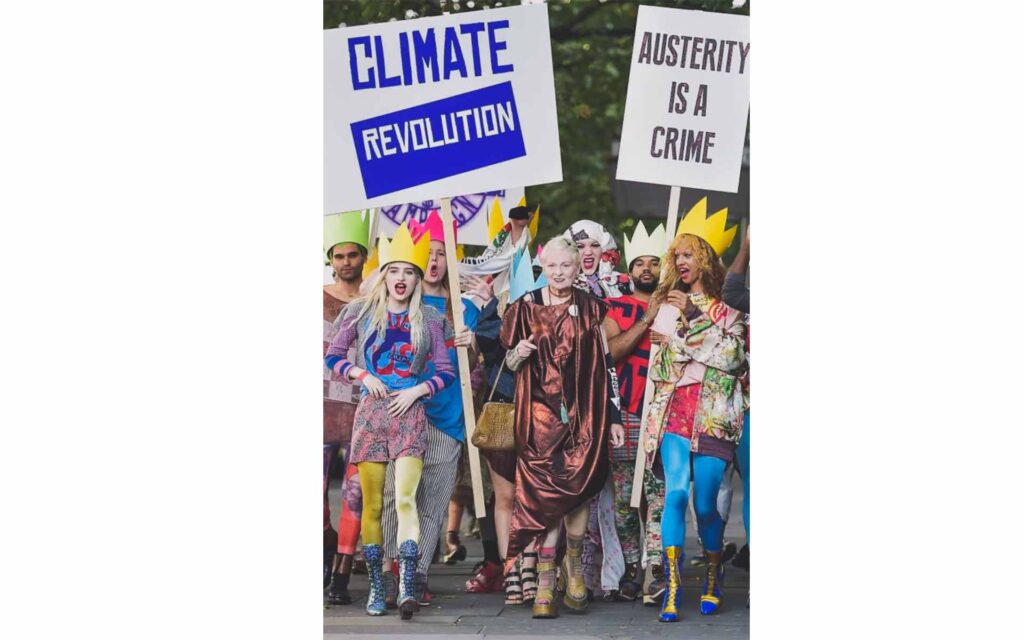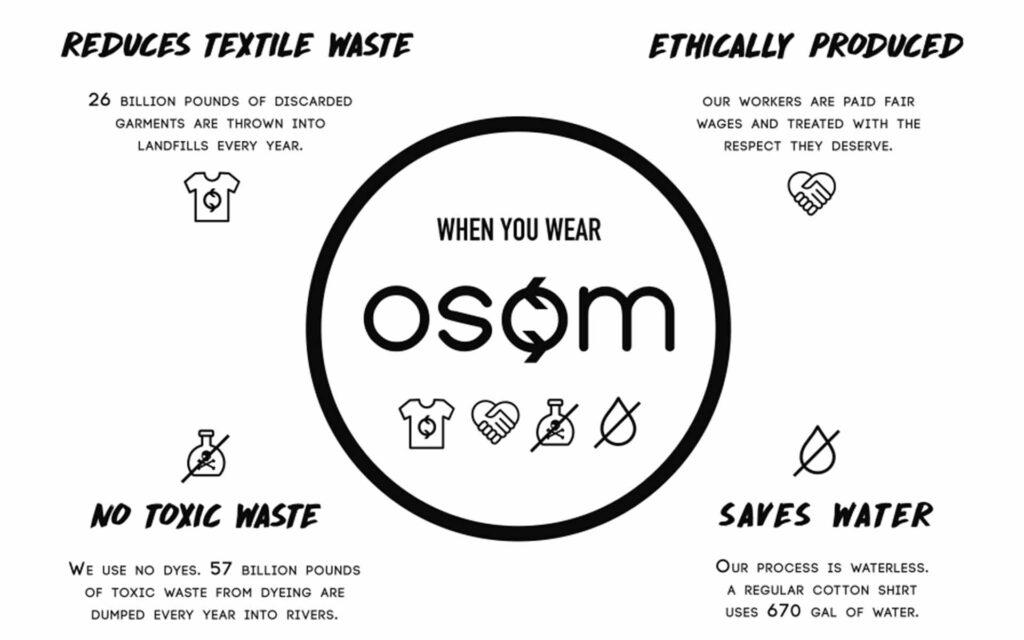In 1987 the report “Our Common Future” of the UN World Commission on Environment and Development, defined sustainable development as the ‘meeting of the needs of the present generation without compromising the ability of future generations to meet their own needs’.
This concept seeks to balance three pillars: the environment, the economy, and society.

Considering this definition, sustainable fashion must be designed and produced, respecting the environment, natural resources, and society.
A bit of history
Formerly the fashion industry was developed in tailors or small fashion houses, on request and with scarce production.
With the emergence of the Industrial Revolution in the eighteenth century, and thanks to new technologies that replaced hand sewing, the effectiveness of production increased allowing confection to be faster and at a lower cost.
The introduction of mass production chains represented a change in the relationship with the environment. Fossil fuels increased greenhouse gas emissions. The consumption of more water in manufacturing gradually used natural resources.
At the social level, workers were required to work long hours in exchange for a meager wage. Meanwhile, working conditions began to damage their health.
During the sixties, the hippie movement emerged, which adopted a slower and more ecological lifestyle, while wearing garments of natural fabrics.
In the seventies, driven by the book Silent Spring by Rachel Carson where the writer warned of the harmful effects of pesticides on the environment, and reaffirming itself in the ’80s, sustainable fashion gained importance thanks to the punk movement. This movement rebelled against capitalism and institutions using fashion as a form of expression. They shopped in vintage and second-hand stores, adopting upcycling styles.
In 1992, the United Nations Conference on Environment and Development held in Rio de Janeiro Brazil, spoke of the problems of the fashion industry.
Rise of fast fashion
The term “fast fashion” came up in late ’89 in a New York Times article. It was titled: “Fashion: Two new stores enter the fast track of fashion”, in which journalist Anne-Marie Schiro describes the new model of accelerated production of the Spanish firm Zara.
The increase in manufacturing in developing countries that reduced costs to increase profits facilitated the mass production model and access to cheap fashion.

The rise of fast fashion led to the excessive use of synthetic fibers. They were derived from oil and were quite easy to produce. The production of these fibers was one of the reasons for the growing carbon footprint. Not only were they non-biodegradable fabrics, but harmful chemicals were used to produce them that pollute soils and waterways.
Overproduction and overconsumption of disposable garments made fashion unsustainable.
Many fast fashion firms have also been accused of paying low wages to workers and enabling child labor.
These changes in production and tragedies such as the one that occurred in 2013 at Rana Plaza in Bangladesh where more than 1000 factory workers died in a collapse, have contributed to calls for changes in the industry and to restore the sustainable fashion movement.
Triple impact
Sustainable fashion aims to reduce environmental impact and promote social responsibility throughout the entire product life cycle.
For the industry to be sustainable in the long term, the 3 pillars of sustainability must be in balance:
- Environmental pillar. Use durable natural or organic materials and non-toxic dyes. Reduce pollution, water consumption, energy, and waste production and compensate for environmental damage suffered.
- Economic pillar. Generate economic value without negatively impacting society and the environment.
- Social pillar. Respect human rights by guaranteeing fair labor practices, and decent wages, complying with safety and health standards so that working conditions are adequate, there is no slavery or child labor, and there are animal welfare policies.
Transparency
To be sustainable, the fashion industry must be transparent throughout its production chain: from obtaining materials, creating raw materials, transforming fiber into fabric, dyeing, and preparing fabrics, designing, and production to transport.

For this, you can count on sustainability certifications from independent third parties that guarantee traceability.
Likewise, every company should generate annual economic, social, and environmental impact reports with measurable goals and objectives in the short and long term.
Pioneers
In the 70s, Patagonia was one of the first sustainable companies.
By 1989, Katherine Hamnett, a political activist and designer, began to raise awareness about the environmental impact of the fashion industry.
People Tree was founded in Tokyo, Japan in 1991, being one of the first fashion brands created with the environment and society in mind.
In 2001, Stella McCartney launched her eponymous brand without animal cruelty, natural materials, 100% PVC-free.
Designers who inspire change
It is not recycling, it is reusing.
Japanese fashion designer Issey Miyake, known for his technology-based designs, rejected throwaway culture.
He preferred natural materials while seeking sustainability with timeless garments.
In 2010 it launched a new line made from recycled materials.
Buy less, choose well, make it last
The designer Vivienne Westwood is the main responsible for the aesthetics of the punk movement thanks to her boutique SEX in the United Kingdom.
She was one of the first to publicly denounce the effects of the fashion industry on the environment and climate change. She used her fashion shows as a platform for his activism.

Honest luxury
In 2015, Uruguayan designer Gabriela Hearst created her eponymous firm with two main values: sustainability and the long term.
Their brand reflects a slow pace and process, where tradition is more important than trend. Where each piece has a purpose. Tradition is valued more than trends. Where details matter.
Conscious luxury
Alejandro Crocker is a Venezuelan designer who creates from what he calls creative recycling.
With his garments, he seeks a conscious creation, giving a second life to forgotten outfits, recycling fabrics and materials, and intervening in them by hand.
Giving value to what already exists and is not in use
The Argentine designer Juliana García Bello founded the firm GARCIA BELLO in 2017. It is based on upcycling methods, where it combines its donations with a reconstruction method and uses zero-waste molding. Create quality and timeless handcrafted garments.
She won the Fashion Makes Sense 2019 award and Redress Design 2020, one of the world’s largest sustainable fashion design competitions.
Transforming waste into treasures
Patricia Ermecheo is a Venezuelan designer who is revolutionizing the textile industry with Osomtex.
Her products are made from high-quality recycled OSOM BRAND™ yarns from discarded garments, reducing textile waste that ends up in landfills. It does not use water or dyes in the manufacturing process of the yarns.
She has collaborated with Nike, The North Face, Calvin Klein, and Tommy Hilfiger.

Sustainable fashion should promote responsible consumption by reducing overconsumption.
According to a survey conducted by the consulting firm McKinsey & Co. during the beginning of the COVID-19 pandemic, it was indicated that 67% of respondents considered the use of sustainable materials to be an important purchasing factor. 63% consider the promotion of sustainability by a brand in the same way.
Therefore, more and more firms incorporate collections with recycled or sustainable materials, but that can be a greenwashing practice.
The world is in a race against time. We cannot afford slowness, false progress, or any form of greenwashing.
António Guterres, Secretary-General of the United Nations.





